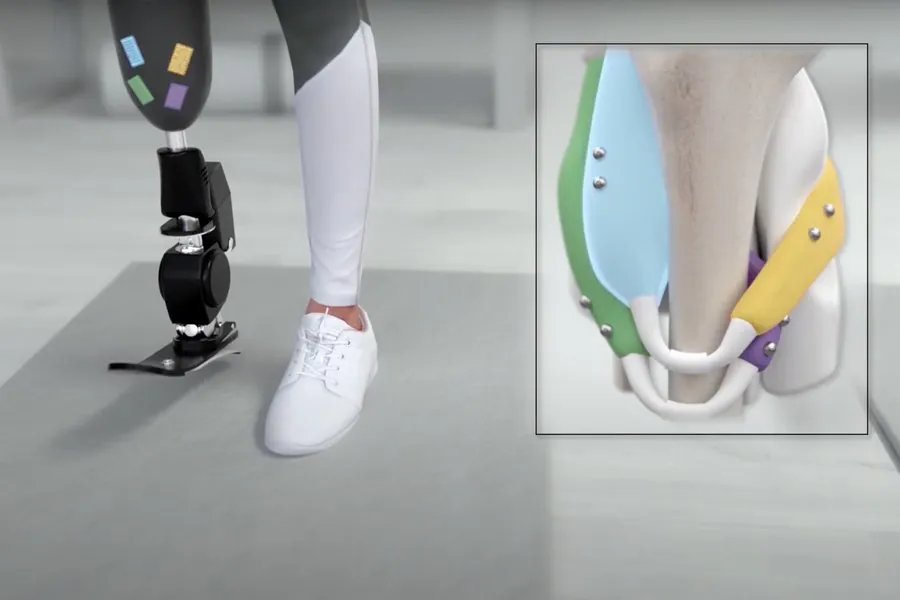Robotics
Magnetic-Based System Helps People Control Wearable Robotics

A team of researchers at MIT has developed an innovative way to monitor muscle movements. According to the team, this new system will make it easier for people to control prosthetic limbs and other wearable robotic devices.
Two research papers were published in the journal Frontiers in Bioengineering and Biotechnology.
The magnet-based system was proven to be highly accurate and safe, and it can track the length of muscles during movement. The team performed studies in animals and demonstrated that the strategy could be used to help individuals with prosthetic devices control them in a more natural way.
Cameron Taylor is an MIT research scientist and co-lead author of the research.
“These recent results demonstrate that this tool can be used outside the lab to track muscle movement during natural activity, and they also suggest that magnetic implants are stable and biocompatible and that they don’t cause discomfort,” Taylor said.
Measuring Muscles During Natural Movements
The research showed that they could accurately measure the lengths of turkeys’ calf muscles as they performed various natural movements like running and jumping. They measured these with small magnetic beads, which were demonstrated to not cause inflammation or other adverse effects after being implanted in the muscle.
Hugh Herr is a professor of media arts and sciences, co-director of the K. Lisa Yang Center for Bionics at MIT, and an associate member of MIT’s McGovern Institute for Brain Research.
“I am very excited for the clinical potential of this new technology to improve the control and efficacy of bionic limbs for persons with limb-loss,” Herr says.
The current powered prosthetic limbs are usually controlled with an approach called surface electromyography (EMG). In this approach, electrodes attached to the surface of the skin or implanted in the residual muscle of the amputated limb are able to measure electrical signals from an individual’s muscles. These measurements are then fed into the prosthesis to help the person control it.
The EMG approach has some limitations. For one, it does not account for any information about the muscle length or velocity, both of which could make prosthetic movements more accurate.
Magnetomicrometry Strategy
The MIT team’s strategy relies on an approach called magnetomicrometry, which leverages the permanent magnetic fields surrounding the small beads implanted into a muscle. A small sensor is attached to the outside of the body, and the system can track the distances between the two magnets. The magnets move closer together when a muscle contracts and further apart when it flexes.
The researchers demonstrated that this system could accurately measure natural movements in a non laboratory setting. They achieved this by first creating an obstacle course of ramps, which turkeys could climb. They also constructed boxes for the turkeys to jump on and off. With the magnetic sensor, the team could track muscle movements during the activities, and they concluded that the system could calculate muscle lengths in less than a millisecond.
The new system is far more efficient than the traditional approach that relies on large x-ray equipment.
“We’re able to provide muscle-length tracking functionality of the room-sized X-ray equipment using a much smaller, portable package, and we’re able to collect the data continuously instead of being limited to the 10-second bursts that fluoromicromety is limited to,” Taylor says.
No Negative or Harmful Effects
In a second study related to the research, the team found that the magnets did not generate tissue scarring, inflammation, or other harmful effects. It also suggested that the implanted magnets did not cause any discomfort for the turkeys.
The implants were shown to remain stable for eight months, and they did not migrate toward each other as long as they were placed at least three centimeters apart.
“Magnets don’t require an external power source, and after implanting them into the muscle, they can maintain the full strength of their magnetic field throughout the lifetime of the patient,” Taylor says.
The researchers will now look to get FDA approval to test the system in humans.
“The place where this technology fills a need is in communicating those muscle lengths and velocities to a wearable robot, so that the robot can perform in a way that works in tandem with the human,” Taylor says. “We hope that magnetomicrometry will enable a person to control a wearable robot with the same comfort level and the same ease as someone would control their own limb.”











